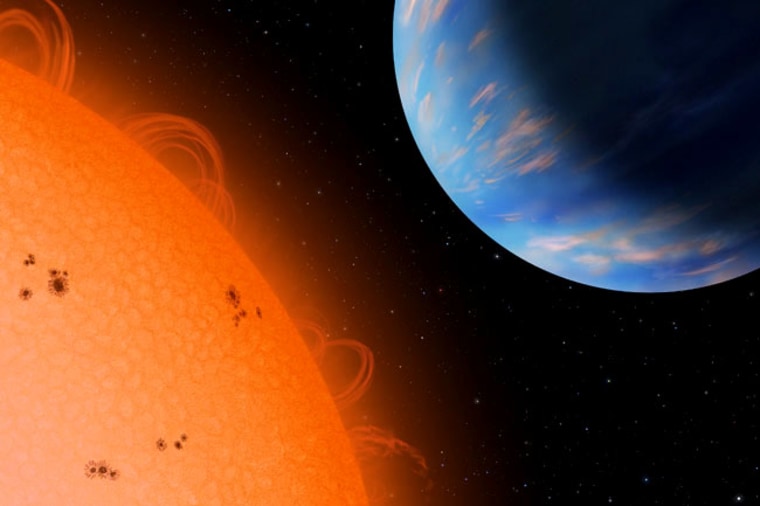Scientists say they have found the smallest planet detected to date outside our solar system.
“I think we are very close, just a few years away, from detecting a planet like Earth,” team leader Ignasi Ribas told a news conference in Madrid on Wednesday.
The rocky "Super-Earth," with a radius about 50 percent greater than Earth’s, circles a small red dwarf star 30 light-years away in the constellation of Leo, scientists from Spain’s Superior Council for Scientific Investigations said. One light-year is about 6 trillion miles (10 trillion kilometers).
The planet, known as Gliese 436c, was found by analyzing distortions in the orbit of another, larger planet around the star Gliese 436, a technique similar to that used more than 100 years ago to discover Neptune. The larger planet, Gliese 436b, was among 28 worlds added to the list of exoplanets last May.
With a mass about five times greater than Earth’s, Gliese 436c is the smallest planet yet discovered outside the solar system. Improved techniques are opening the way to discovering worlds ever more like our own, Ribas said.
“In a very short time, we are going to be able to see a planet with the same mass as Earth, although it’s going to be in an orbit much closer to its star than that of Earth around the sun, so it won’t strictly be a planet like Earth,” Ribas said.
“Planets with a mass similar to Earth situated at a distance from their star which allows liquid water on the surface — in other words, a habitable planet — we’re probably a bit further from [discovering those], but we surely will in a decade.”
Most of the 280 planets discovered until now are gassy giants like Jupiter. Scientists are increasingly finding small rocky worlds as they realize that planetary systems are extremely common in stars around our galaxy.
Gliese 436c orbits close to its small, relatively cool star once every five Earth days. Its rotation means 22 Earth days pass between each time the red dwarf star rises on its horizon — so its days are four times as long as its years.
The findings were published in the April 10 issue of Astrophysical Journal Letters.
This report includes information from Reuters and msnbc.com.
